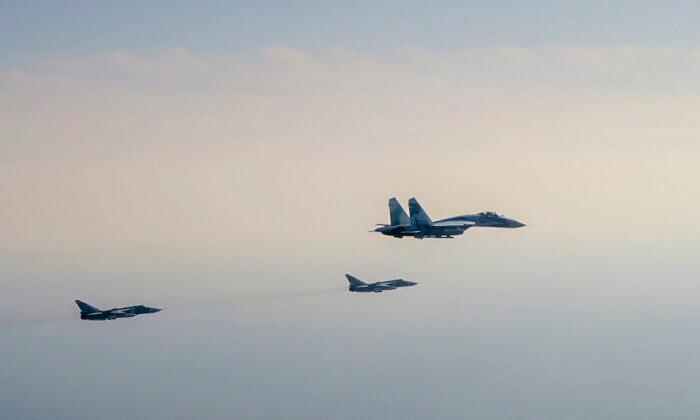The air forces of Denmark, Finland, Norway, and Sweden have agreed to operate their fleets of more than 200 fighter jets as a unified Nordic air defense force aimed at countering the threat from Russia.
The four nations announced the joint agreement in separate statements on March 23.
Marking a first of its kind between the Nordic nations, the joint declaration of intent (JDI), was signed on March 16 at Ramstein Air Base in Germany by the commanders of the countries’ air forces.
The head of NATO Air Command, Gen. James Hecker, who also oversees the U.S. Air Force in the region, was present for the signing, officials said.
According to a statement from Denmark’s air force, the intention of the JDI is to bolster already well-established cooperation between the Nordic countries and strengthen the Nordic air forces.
Fleet Size of ‘Large European Country’
The nations will pursue four areas of action, according to Bloomberg: integrated command and control, operational planning and execution, flexible deployment of forces, and joint airspace surveillance and training exercises.Currently, Norway has 57 F-16 fighter jets and 37 F-35 fighter jets and has ordered 15 more of the latter. Meanwhile, Finland has 62 F/A-18 Hornet jets and 64 F-35s on order, while Denmark has 58 F-16s and 27 F-35s on order. Sweden has more than 90 Gripens jets.
The exact number of those planes that are operational is unclear.
Maj. Gen. Jan Dam, commander of the Danish air force, said the move to unite was sparked by Russia’s invasion of Ukraine which began in February last year.
“Our combined fleet can be compared to a large European country,” Dam said. “We would like to see if we can integrate our airspace surveillance more, so we can use radar data from each other’s surveillance systems and use them collectively. We are not doing that today.”
Sweden, Finland NATO Bid
Both nations applied to join last year but their applications were being held up by Turkey, which along with Hungary has yet to ratify the memberships.Ankara has accused the two Nordic countries of refusing to extradite members of the Kurdistan Workers Party (PKK), which is listed as a terrorist organization by Turkey, the United States, and the European Union.
Hungary’s Prime Minister Viktor Orban, meanwhile, has accused the two Nordic nations of spreading “blatant lies” about Hungary which have raised questions among lawmakers in his party about whether to ratify the bids.
Despite the initial delay, Turkey and Hungary both announced earlier this month that they will sign off on Finland’s NATO membership, leaving Sweden still facing a waiting game, although it is widely expected to be admitted at some point in the future.
“With a total of almost 250 modern combat aircraft, this will be a large combat force that must be coordinated,” Folland added.
Russia has not publicly commented on the announcement of the newly-unified Nordic air defense force but has previously insisted it is not a threat to Finland and Sweden.





